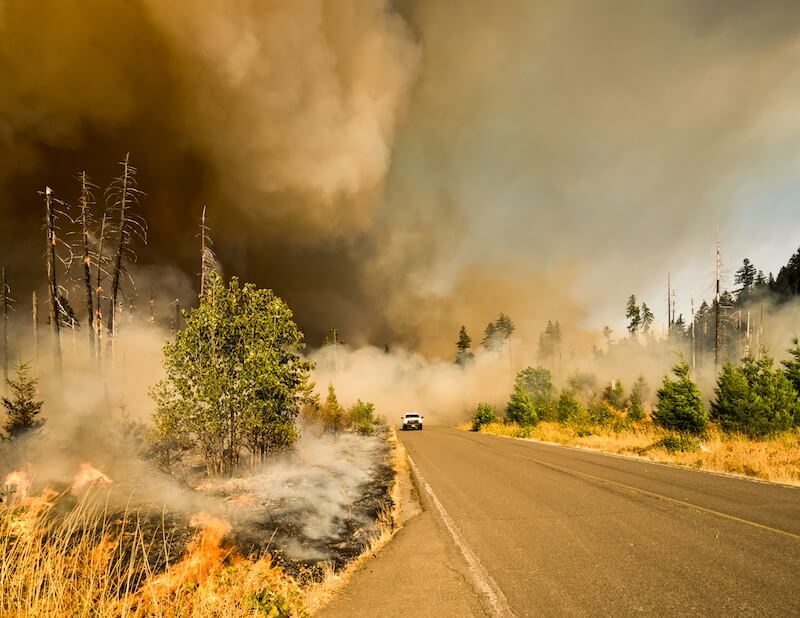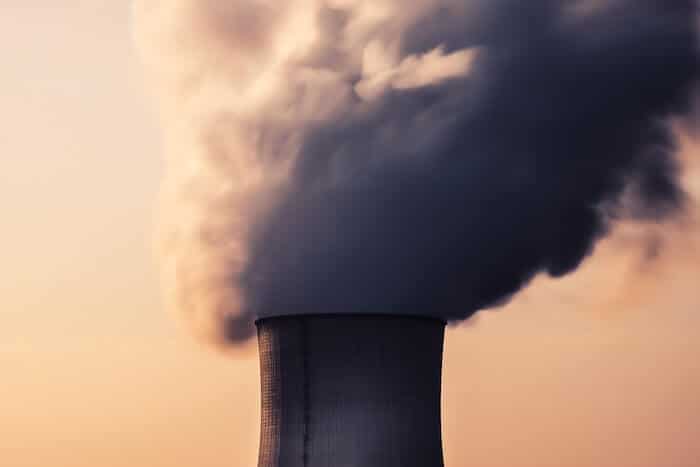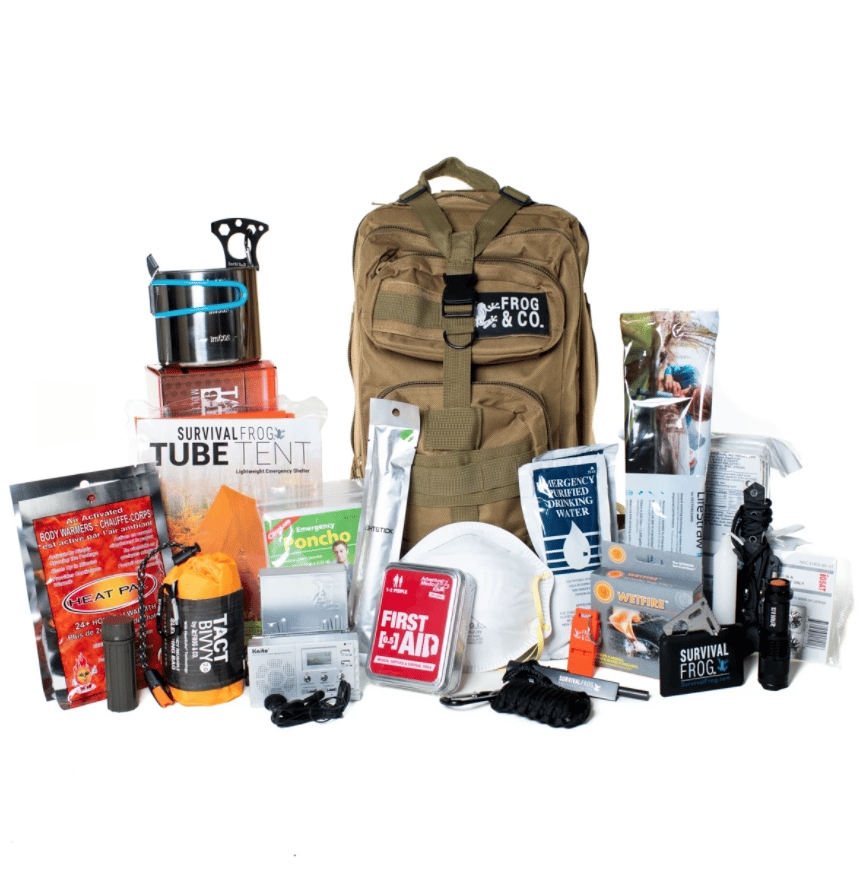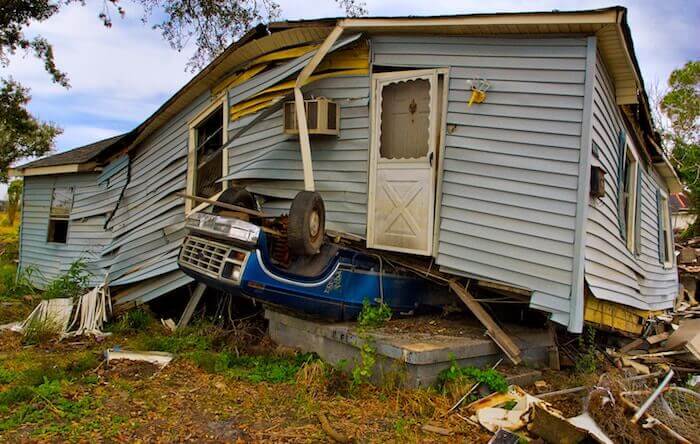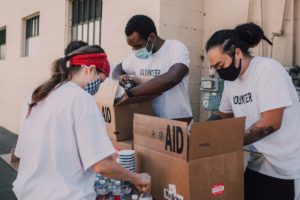Emergency Evacuation
Plan & Checklist
I live in a small rural town of 3,000 people. Nothing ever happens here. But several years ago, a tornado touched down at a local elementary school. All the power went out in the town, and what was normally a 12-minute commute across town became 70 minutes. My wife was working at the pharmacy, only 200 feet from where the tornado touched down, and I was driving from the school that our children attended. I came home to 7 oak trees lying across a now crushed and leaking roof. It took another hour for my wife to get home. The phone lines were down and we had only our pre-made plans to reunite. She could have wasted a lot of extra time and emotional energy had we not already made plans.
We read and hear about disasters occurring almost every day: hurricanes, wildfires, chemical spills, and nuclear disasters, just to name a few. Many times those disasters force people to evacuate with little or no time to prepare, that’s why it is so important to make a plan ahead of time for your family.
The goal of this post is not to bring fear into your lives, but to help you pre-plan and prepare to keep your family together and safe in the case of an emergency. The last thing you need is confusion and lost relatives amid an already chaotic situation.
In this post, I am going to guide you through a bug out plan for the most common disaster scenarios. I have also provided an evacuation plan and checklist that you can download and fill out with your spouse.
The elderly and those who refuse to evacuate are at the highest risk of dying during a disaster. If you are elderly, you need to pre-arrange transportation with family, friends, or neighbors. Everyone’s family should have pre-planned meeting sites to save hours of trying to track each other down.
How can I plan for a nuclear disaster?
During a nuclear emergency, a plan devised to evacuate the area by plant officials and local authorities will be enacted. If your child goes to a public school within the radius of the plant, you will not likely be able to reach your child at the school. The children will be transported to a pre-planned site outside of the danger radius.
If you live near a nuclear power plant, you should garner a copy of the evacuation procedure and review it frequently with your family (often available at the local post office). Make your plans with your spouse, parent, or other responsible adult: you will have one shot to execute it correctly.
What will I do with my animals?
If you are a pet owner, after reading the evacuation plan is a good time to talk about moving Fluffy. Make sure you have a pet carrier and leash. Make sure your pet has ID in case of separation. Your pet needs its bug out bag with food bowls, 72 hours of food, water, and a method to dispose of waste such as diapers or kitty litter. Red Cross and most other shelters do NOT allow pets. You may want to find out if any hotels along your evacuation route take pets
If relocating the livestock is not an option, decide whether to shelter them or turn them outside.
Whatever you decide, plan before the panic, and do not place the health of your pet before the well-being and safety of your family members. Time is of the essence, and if you want to beat thousands of other evacuators, you need to be on the road as quickly as possible.
Gas stations will be impossible to get in or out of, as many people chronically run their vehicles below a quarter of a tank. This is why I advise people to keep their fuel tank at least half full at all times.
How can I plan for a wildfire?
Wildfires come up so fast, most folks simply run/drive for their lives with nothing more than the clothes on their backs. To protect your home ahead of time, I encourage you to consider:
- creating a safety zone with no combustibles within 30 feet of any structure
- install spark arrestors in chimneys and stovepipes.
- Use fire-resistant siding and roofing material.
- Either pre-burn or clear all debris within 100 feet of any structure
I encourage those who live in areas prone to fire to keep a bag in their cars that includes up-to-date bank statements, copies of social security cards, passports, birth certificates, recent photos of all family members, and other documents deemed irreplaceable. Some people keep copies on a thumb drive.
My wife and I still remember the day in high school (we were classmates then) in New Lebanon, NewYork, where a fuel tank ruptured at a gas station ¼ mile away. The entire school population was rushed out into the parking lot and walked ½ mile to the local park in the opposite direction.
The entire evacuation was complete in less than 1 hour, to the credit of school and local officials. By the time our freaked-out parents found out, we were out of harm’s way. It is a good example of proper municipal planning done in advance of an event.
How can I plan for a chemical spill?
Store water!
Chemical spills can render a town’s water supply useless within a few hours. Chemical spills can occur from transport accidents – trucks or trains. Evacuation is usually necessary as some spills contaminate the air – one of the few scenarios where gas masks can save your life.
West Virginia had a chemical spill in a major waterway in January 2014 that affected 300,000 people. For an entire week, folks in nine counties and visitors to the capital city of Charleston were not only without clean drinking water, but their health was placed at risk if they merely inhaled the spilled chemical for an extended period . FEMA mobilized approximately 24-hours after the disaster.
An entire day is a long time for humans, pets, and livestock to go without water, even during the wintertime. Imagine the enhanced level of panic if the Elk River chemical spill had occurred during the heat of the summer. This emergency is a good reminder of why we need to have stored water at all times.
We sell portable water storage bricks and water purifiers just for this purpose!
How can I plan for a hurricane?
The East and Gulf Coasts of the US are prone to Hurricanes. This area contains approximately 1/3 of the population! Given the amazing intensity of these new Superstorms, we hope that everyone has heightened awareness of weather daily.
Hurricane preparedness at the coastal level is intense, as the individual must try to protect their home with plywood, duct tape, tarps, etc. to protect their investment and evacuate on time. Keeping bug out bags in a coastal home is wise. The evacuation routes will clog quickly.
If you are evacuating due to a hurricane, make sure you run through the following checklist if you have time.
- Gather family: stay together
- Unplug electrical equipment: coffee pot, radio, TV
- Keep refrigerators and freezers plugged in unless flooding is expected
- Exception: If advised by local officials to turn off all utilities, switch off all individual electrical circuits before shutting off the main circuit breaker
- Shift off main water valve and natural gas/propane to your home
- secure windows and doors, and cover windows with plywood or shutters.
- Bring in all outdoor furniture and items not tied down.
- Put bug out bags in the car. Take one car if possible to avoid separation.
- Leave a note in a conspicuous place where you plan to go and how you can be reached. Some peppers disagree with this as this is an OPSEC (operations security) breach. You will need to decide given the situation if you want to do this.
This checklist is included in our downloadable Emergency Evacuation Plan below, as well as a checklist of supplies for your bug out bag.
Conclusion
Evacuating your home is never an ideal situation, but unfortunately, you may be left with no choice. Be sure to download our Emergency Evacuation Plan. Take some time to fill it out with your spouse or other responsible adult, and make sure your family members are familiar with the plan. Taking a couple of hours to do this now can prevent your family from panic, confusion, and wasted time and energy in an already chaotic scene. Be sure to also get good homeowner’s insurance to cover your home in case of any of these emergencies.

